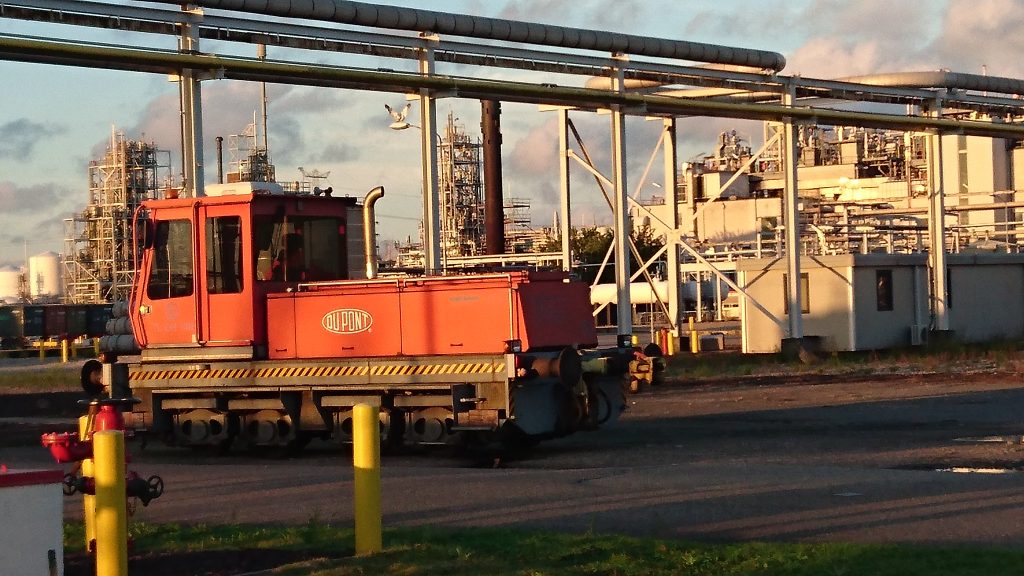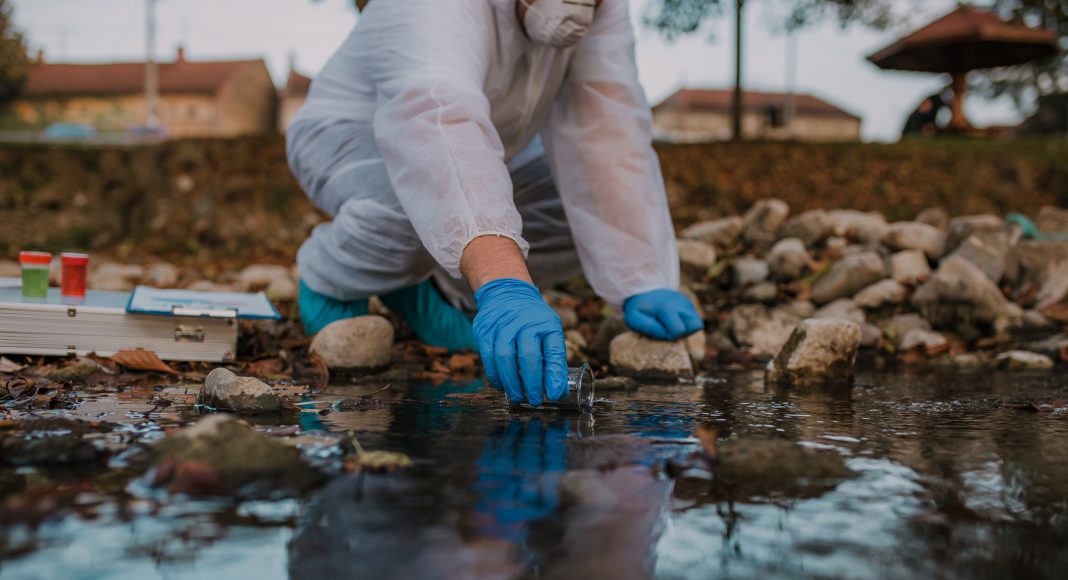Environmental externalities are vexing for corporate decision makers, but some companies have figured out a way to deal with them: a spinoff. A recent case study explores a troubling practice of companies attempting to separate themselves from environmental liability through the spinoff of thinly capitalized subsidiaries.
The creation of shareholder value requires a complete and accurate accounting of the costs and benefits of business decisions. If costs are excluded, decisions are distorted, leading to investment that might not otherwise occur or would be priced differently. The omitted costs do not disappear. They shift to parties not represented in the transaction—and are borne by society and redressed through taxation or lawsuits. This problem is known as the externality problem.
Environmental externalities are vexing for corporate decision makers because of their pervasiveness and cost. Companies with a long history of operation have found themselves saddled with long-tail liabilities that might not have been known or downplayed in the past. Commercial byproducts once thought to be harmless might later be discovered as toxic. The costs of environmental damage is not easily quantifiable, and temptation might exist to defer costs into the future when they have a lower present value.
Still, environmental costs are a legal and moral obligation of the company and proper corporate governance requires that they be responsibly dealt with. Unfortunately, examples exist where companies have taken aggressive action to separate their businesses from exposure to legacy liability.
In a recent case study, we examine the practice of spinning off environmental liabilities into separate companies inadequately capitalized to satisfy them, in what appears in retrospect to be an egregious attempt to avoid legal obligation.
Environmental Spinoffs
Environmental liabilities are the legal obligation of the business that owns the asset that created them. A company cannot shed liability by shutting down the business or mothballing the facility that created it; it remains with the parent company. The only ways for a company to protect itself are to sell the business to new owners who assume liability, to resolve them through a bankruptcy process, or to spin off the assets into a separate company with the liabilities assigned.
In a spinoff, the company assigns assets, debt obligations, and contingent liabilities to the subsidiary that will be spun off. The value of contingent liabilities is estimated by an outside firm. The company is afforded discretion in assigning contingent liabilities, just as it has discretion to assign debt obligations. At the spin, the company initiating the spin must demonstrate that the value of the spinoff company’s assets exceeds that of its liabilities (i.e., it must be solvent).
SFAS No. 5 (“Accounting for Contingencies,” subsequently updated) dictates the rules for recognizing contingent liabilities: a liability will be accrued and expense recognized if the contingent loss is “probable” and the amount of loss can be “reasonably estimated.” If the loss is probable and the amount can only be recognized as a range, the company should recognize the best estimate. If all loss outcomes are equally probable, the company should recognize the lowest. If the potential liability cannot be reasonably estimated, the company discloses the nature of the loss but accrues no value.
Research suggests environmental contingent liabilities in financial statements might not always be accurately valued. Barth and McNichols (1994) demonstrate values can deviate significantly from the liability implicit in the stock price.
Safeguards exist to ensure that a company does not assign liabilities to a subsidiary that is insufficiently capitalized to meet them. Fraudulent conveyance prohibits debtors from transferring assets before bankruptcy in order to keep assets out of reach of creditors. If this occurs, creditors are allowed to go back to the parent company for repayment (typically within four years).
“Research shows that companies can use aggressive maneuvers to disassociate themselves from environmental liability.”
Companies that spin off environmental liabilities can defend against fraudulent conveyance by arguing the spin company was solvent at spin and rely on the solvency opinion of the third-party advisor to justify that assertion. Delaware courts do not allow a spinoff to argue that it was overly indebted, so long as it was solvent.
Research shows that companies can use aggressive maneuvers to disassociate themselves from environmental liability. Macey and Salovaara (2019) show that four of the largest coal companies in the US shed $5.2 billion in environmental and retirement liabilities through bankruptcy. Shapira and Zingales (2017) use the case of DuPont (discussed below) to show a decision to pollute is net-present-value positive for shareholders because of the time mismatch between when pollution occurred and is remediated.
To illustrate the problem, we review three examples.
Solutia
In 1997, Monsanto spun off its chemicals business into a separate company called Solutia and obligated Solutia to bear responsibility for associated environmental liabilities. Solutia accrued $150 million and estimated closure costs could add $70 million.
In 2002, The Washington Post alleged Monsanto knew for years of abnormally high PCB (polychlorinated biphenyl) levels near its plant in Anniston, Alabama. Monsanto had been the dominant producer of PCBs and produced PCB at the Anniston plant from 1935 to 1971. The EPA banned PCB in 1979.
The article alleged that Monsanto regularly released waste materials into creeks near the plant. By the late 1960s, managers noticed fish dying in adjacent waterways. The company conducted water tests and determined PCB levels were 7,500 times the legal limit. Company documents showed management had debated these issues and considered actions ranging from “sell the hell out of them as long as we can” to stopping production immediately. The company opted to gradually reduce PCB production while searching for a replacement. Still, 25 years later, local residents reported clusters of cancer cases and elevated levels of PCBs in their blood.
Solutia’s stock fell 25 percent. The company said it was adequately reserved for all potential liability. One research analyst challenged this assertion: “How do you define what the potential liability is?”
A jury required Solutia and Monsanto to repay property damage for PCB contamination. Monsanto argued the claims should be borne by Solutia.
In 2003 Solutia declared bankruptcy. Solutia sued Monsanto, alleging it assigned “onerous” obligations at separation. Monsanto responded, “We will not take any obligations that are not ours.”
The courts determined that Monsanto’s obligations were substantial. Over the following two years, Monsanto accrued $600 million. When Solutia emerged from bankruptcy in 2005, Monsanto contributed an additional $250 million and was given a 30 percent equity stake. In 2012, Solutia sold to Eastman Chemical for $3.4 billion.
Tronox
In 2005, oil-exploration company Kerr-McGee spun off Tronox, a producer of titanium dioxide. Kerr-McGee issued shares in Tronox through a partial IPO in 2005 followed by a complete spinoff in 2006. Tronox listing documents valued environmental liabilities at $239 million. The master separation agreement stipulated that Kerr-McGee would reimburse Tronox for liabilities in excess of reserves but capped its exposure at $100 million.
Three months after spin, Anadarko agreed to purchase Kerr-McGee for $16 billion. Kerr-McGee’s CEO received a payout of almost $200 million.
In 2009, Tronox declared bankruptcy. The company sued Anadarko, alleging it was inadequately capitalized at spin. Tronox disclosed it was responsible for shouldering environmental liabilities associated with Kerr-McGee discontinued chemical operations in addition to its titanium oxide business.
Court documents showed Kerr-McGee had been considering transactions to separate itself from liabilities since 1998. In 2001, the board approved the creation of a “clean” holding company. In 2003, Kerr-McGee began a process of removing assets from its chemicals business and assigning liabilities to Tronox. Only a portion of these was disclosed to the public. Kerr-McGee actively tried to sell Tronox, but buyers demanded a dramatically reduced price to assume environmental liability. One private-equity consortium proposed $1.2 billion without environmental liability and only $300 million with it. Tronox argued its reserves at spin were “woefully inadequate.” US prosecutors and the EPA joined the lawsuit against Anadarko.
In 2011, Tronox emerged from bankruptcy, and a litigation trust for creditors took its place as plaintiff. The judge later ruled Anadarko and Kerr-McGee acted with “intent to hinder” and awarded $5.15 billion to the trust.

Chemours
In 2015, DuPont spun off specialty chemicals businesses into a separate company called Chemours. Chemours produced fluoroproducts, the most famous of which was Teflon, and other performance chemicals.
Within a year, Chemours lost three consecutive cases finding perfluorooctanoic acid (otherwise known as PFOA or C-8, an input in the production of Teflon) was responsible for a range of diseases, including cancer. While the individual awards were small, amounting to several hundred thousand dollars to a few million each, the number of cases exceeded 3,400.
In 2017, the company, jointly with DuPont, agreed to pay $671 million to settle certain claims involving PFOA—with each company responsible for half.
This settlement did not put Chemours’ legacy liabilities behind it. In 2019, the company sued its former parent alleging its environmental liabilities greatly exceeded those reported at spin: $2.5 billion, or five times the amount accrued. Liabilities included those unrelated to performance chemicals, including DuPont’s legacy exposure to explosives, asbestos, and benzene. Chemours received two-thirds of DuPont’s environmental liabilities but only 19 percent of revenue—in addition to $4 billion in debt.
The judge dismissed the lawsuit—ruling no jurisdiction—and sent the matter to arbitration. A settlement has not been reached.
Concluding Remarks
These cases highlight a troubling practice of companies attempting to separate themselves from environmental liability through the spinoff of thinly capitalized subsidiaries.
First, we see that decisions to pollute can be net-present-value positive compared to the cost of abatement. Second, companies can benefit from reputational improvements by separating itself from polluting activities. Third, management that completes a spinoff has opportunity for compensation gains by avoiding equity losses in a spinoff that goes bankrupt; these gains are unlikely to be clawed back. Fourth, informational asymmetries limit the ability of shareholders to accurately price liabilities. Fifth, the statute of limitations on fraudulent conveyance introduce the potential that inadequate reserves will not be discovered until after the statute of limitations has lapsed.
The combination of these features provides a socially undesirable channel for companies to avoid the externalities produced by their environmental actions.






